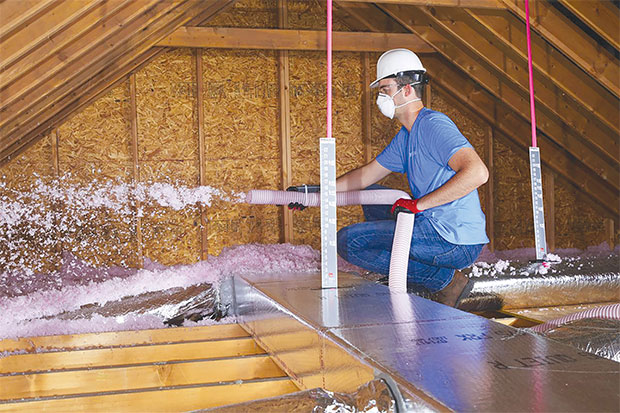As many Americans have traded their work commute for a home office, interest has focused on creating more comfortable remote workspaces. Ergonomic furniture, acoustic soundboards and high-speed broadband technology are a few investments designed to make working at home more comfortable. But an overlooked opportunity for improving comfort exists in every room: a home’s air.
Temperature, humidity and particulates in indoor air can all threaten comfort. And given that the average person spends 90% of their life indoors, the quality of a home’s air isn’t regulated to working hours. In this article, we share five ways to support a higher level of comfort in every season.
Get your ‘ducts’ in order
While today’s HVAC systems are highly efficient, even the most advanced heating or cooling technology will not deliver its full value if attic ductwork is compromised. Energy Star reports that an average home loses up to 30% of the air that moves through its duct system due to leaks, holes and poorly connected ducts. Tom Casey, chief visionary officer with Griffin Service and a frequent presenter at HVAC industry events, says ductwork can be the ultimate indoor air quality accessory.
“You won’t address the weakest link in a home’s HVAC system if particles from attic ductwork are simply filtered and blown out from the attic ducts through the registers again,” he says. “You’ve got to tackle the root cause.”
Assure adequate attic insulation
More than 90% of homes are under-insulated, falling short of current guidelines for energy efficiency. Attic insulation provides an effective resistance to the flow of heat from warm into cool parts of a home. Adequate levels of insulation can help keep hot attic air from infiltrating the conditioned area of a home in summer; and restrict heated air from entering the attic in winter.
Practice good HVAC hygiene
Change your furnace filter according to the manufacturer’s directions and visually inspect your filter monthly. If the furnace filter is covered with dust, changing the filter is a good idea even if it has not reached the end of its anticipated lifespan. Not only will this support home comfort, changing the furnace filter regularly will result in less wear and tear on HVAC equipment.
Look for warning signs
Debris around a register or increased dust in the home can indicate an HVAC problem. Similarly, higher energy bills are a sign that air may be escaping due to holes in a home’s ductwork. Mentioning these issues during routine service visits can help troubleshoot issues that threaten comfort and energy efficiency.
Think “whole house”
Pearl Certification, a leader in energy certification, has partnered with the Owens Corning® AirCare™ Contractor program to support a “whole house” approach that goes beyond equipment to evaluate and certify high-performing indoor environments. Selecting an AirCare Contractor and certifying a home’s HVAC system brings a level of objectivity to assessing a home’s comfort and efficiency.
This article is courtesy of Brandpoint.

